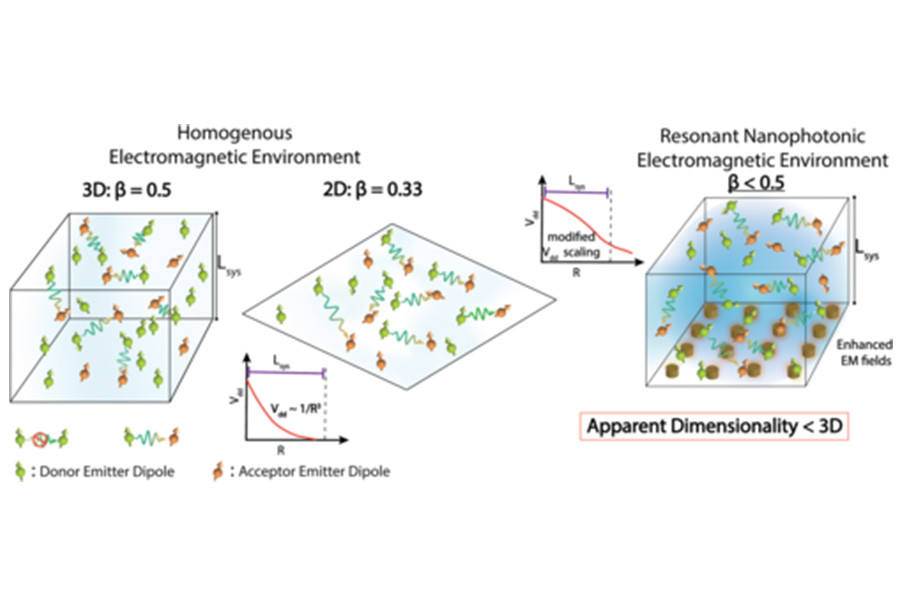Purdue Researchers experimentally realize a novel way to control long-range optical interactions between molecules

In a recent paper published in Physical Review Letters, titled, “Reducing Effective System Dimensionality with Long-Range Collective Dipole-Dipole Interactions”, researchers from Purdue’s Elmore Family School of Electrical and Computer Engineering have experimentally demonstrated how to control optical interactions between molecules. To this end, they design and realize a nanophotonic structure to control interactions between two species of molecules. The paper details how one can control the underlying dimensionality (1D,2D and 3D) of interactions between optically active emitters using structured materials.
“Controlling dimensionality of interactions between molecules is a knob that researchers didn’t turn up or down before. Such dimensionality control in molecular systems can open a myriad of quantum chemistry, fluorescence imaging and quantum optical applications,” says Ashwin K Boddeti, the lead author of the paper says. Ashwin is a PhD student of Prof. Zubin Jacob in Purdue University’s Elmore Family School of Electrical and Computer Engineering. He further adds, “We hope that this result opens avenues for using nanophotonic control as a route to enhance or suppress molecular interactions.”
Controlling the geometry and thus the dimension of interacting ensemble of optical emitters is challenging particularly in solid-state systems. In this work from Prof. Zubin Jacob’s group, the team created long-range dipole-dipole interactions to realize an effectively lower-dimension system. In free space, dipole-dipole interactions are very short ranged in nature, they occur only when the distance between the atoms or molecules is typically about 10nm-15nm. However, by modifying the nanophotonic environment in which the atoms or molecules are present, this interaction can be made long-range in nature, almost 10 times larger. The authors are currently exploring novel quantum sources of light using these interacting molecules.
There are several co-authors on the paper, both from Purdue University and Northwestern University. From Purdue are Alexandra Boltasseva, Ron and Dotty Garvin Tonjes Distinguished Professor of ECE, Vladimir Shalaev, Bob and Anne Burnett Distinguished Professor of ECE, Hadiseh Alaeian, assistant professor of ECE, and Zubin Jacob, Elmore Professor of ECE.
This work was supported by the U.S. Department of Energy (DOE), Office of Basic Sciences under DESC0017717
Source: Reducing Effective System Dimensionality with Long-Range Collective Dipole-Dipole Interactions
